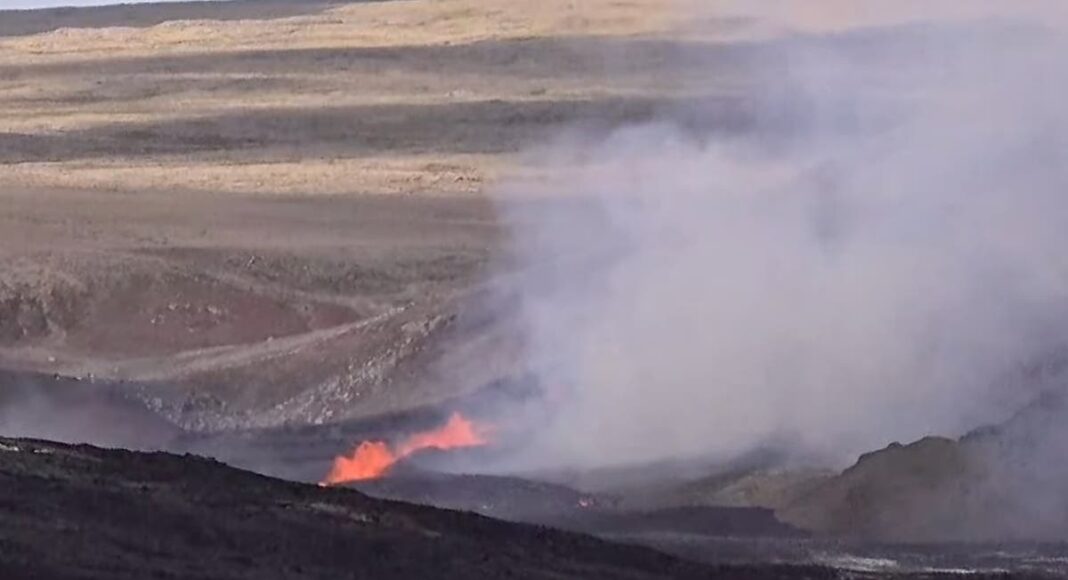A volcano in Iceland near Reykjavik has begun to erupt less than a year after its first eruption in 6,000 years had ended.
The Fagradalsfjall volcano is located about 20 miles (about 32km) away from Keflavik airport, in the southwest of the island nation.
It erupted at about 1.30pm local time on Wednesday.
No flights have been disrupted and the international airport has remained open. Roads in the area have been closed.
Lava has been coming out of a narrow fissure, as seen in footage from a live feed belonging to the Icelandic state broadcaster RÚV.
The lava has been flowing over an area of solidified lava that was emitted during last year’s eruption that lasted several months.
The eruption that started in March 2021 went on for six months before it ended on 19 September. It was the volcano’s first eruption in 6,000 years, and the first eruption in the Reykjanes Peninsula in more than 800 years.
Thorvaldur Thordarson, a professor in volcanology at the University of Iceland, told Icelandic media that he does not consider the fissure to be dangerous as long as it does not grow bigger.
He believes the fissure is about 500 metres (1,640ft) long and that the lava is flowing at a speed of a few cubic metres per second.
However, he has warned people in the area to avoid breathing in the “cloud” of sulfur gas being emitted from the volcano.
It’s expected that people will be in the Reykjanes Peninsula to watch the event that is known as a “tourist eruption” due to the relative safety for people to watch it in person.
It’s a commonly-used term for eruptions of its scale, according to tourism website Visit Iceland.
The 2021 eruption began with a fissure that was just 180 metres (600ft) long, the website says.
It adds: “The lava flow was soon concentrated in two craters that erupted continuously. There was no explosive activity producing ash plumes, as happened in the Eyjafjallajökull 2010 eruption, causing a shutdown in air traffic over Europe.
“In this case, the eruption turned out to be an effusive fissure eruption, producing a steady outflow of basaltic lava of about 6m3 and releasing volcanic gases.
“After a few weeks, new fissures formed and new vents started to open while others became inactive. At one point, six craters were erupting simultaneously.”
Eyjafjallajökull’s eruption in 2010 sent a volcanic ash cloud into the atmosphere that halted air travel between Europe and North America.
Millions of passengers were stranded after more than 100,000 flights were grounded.




